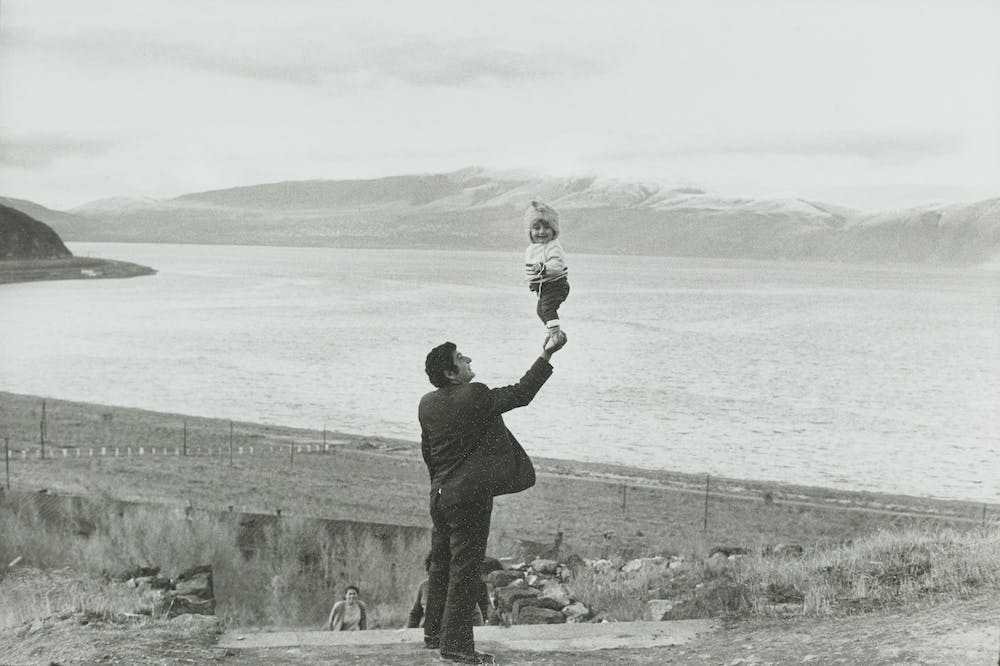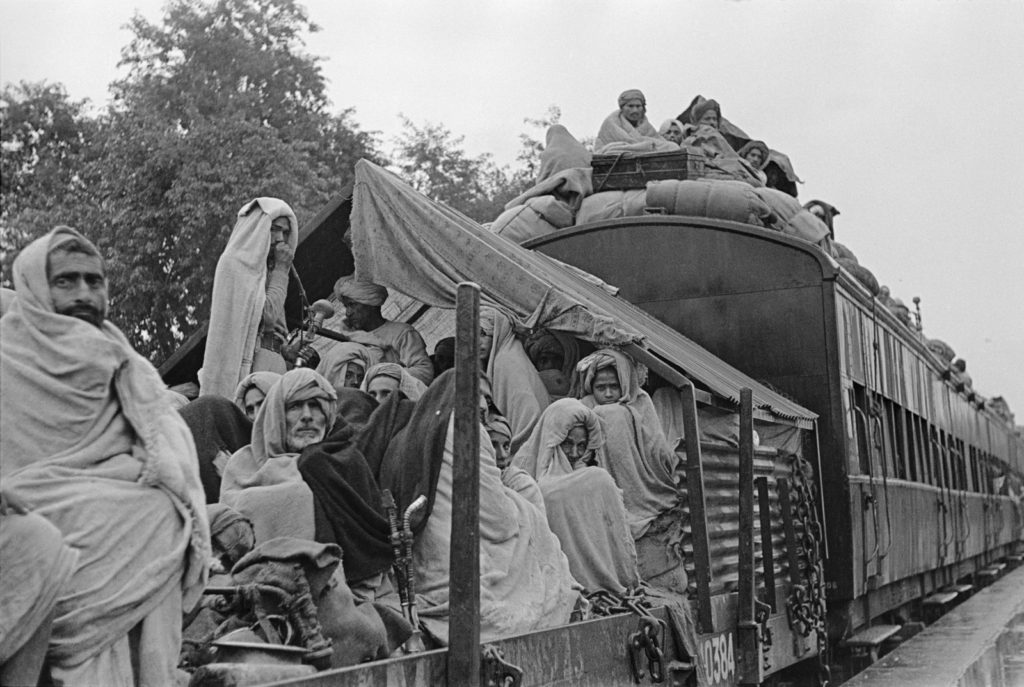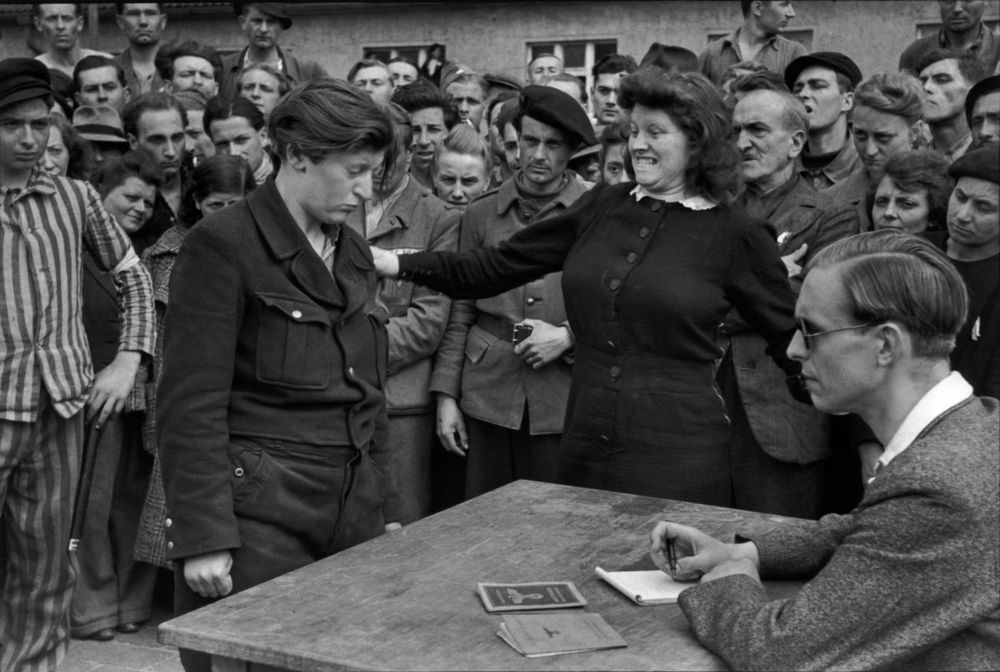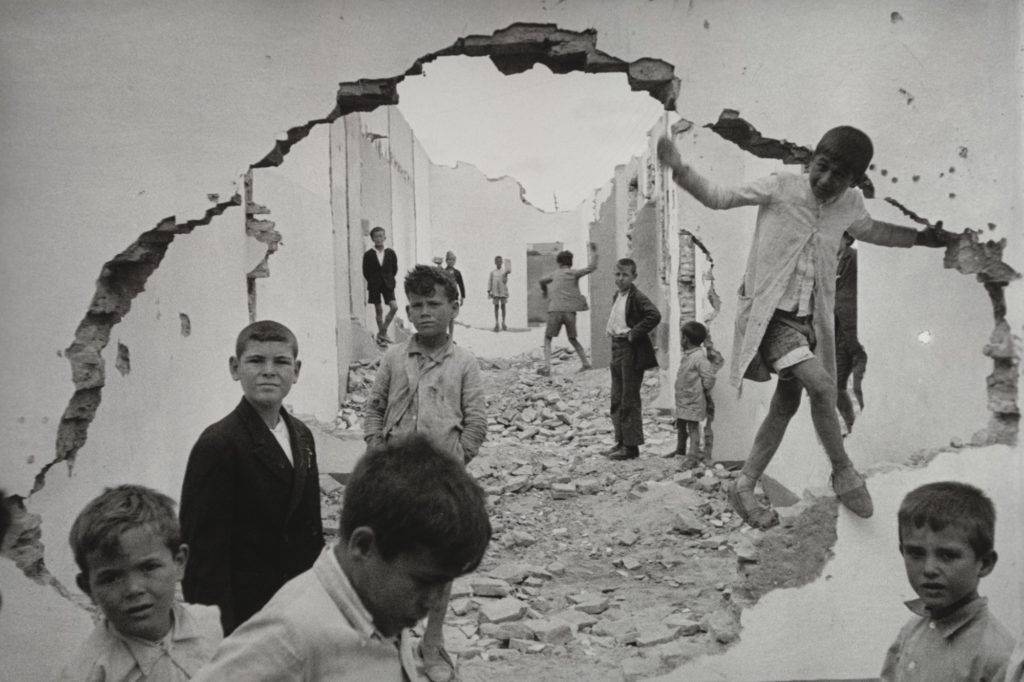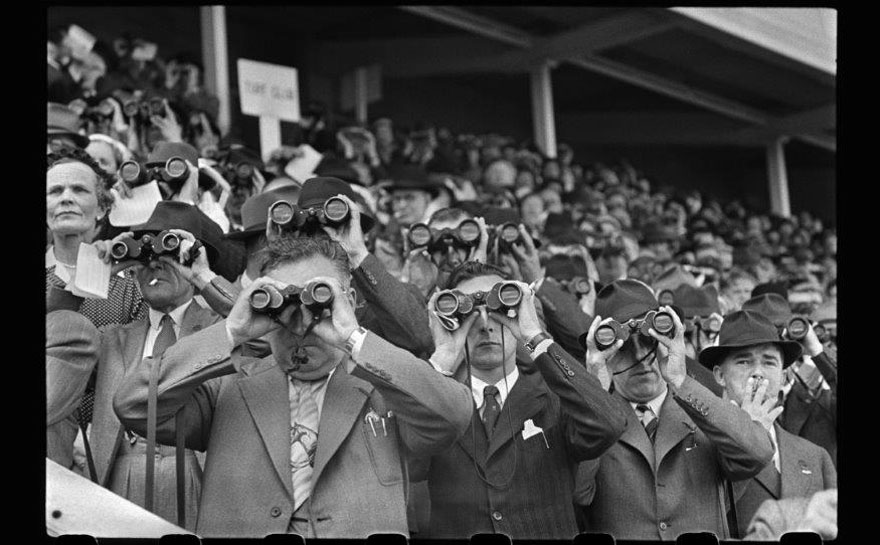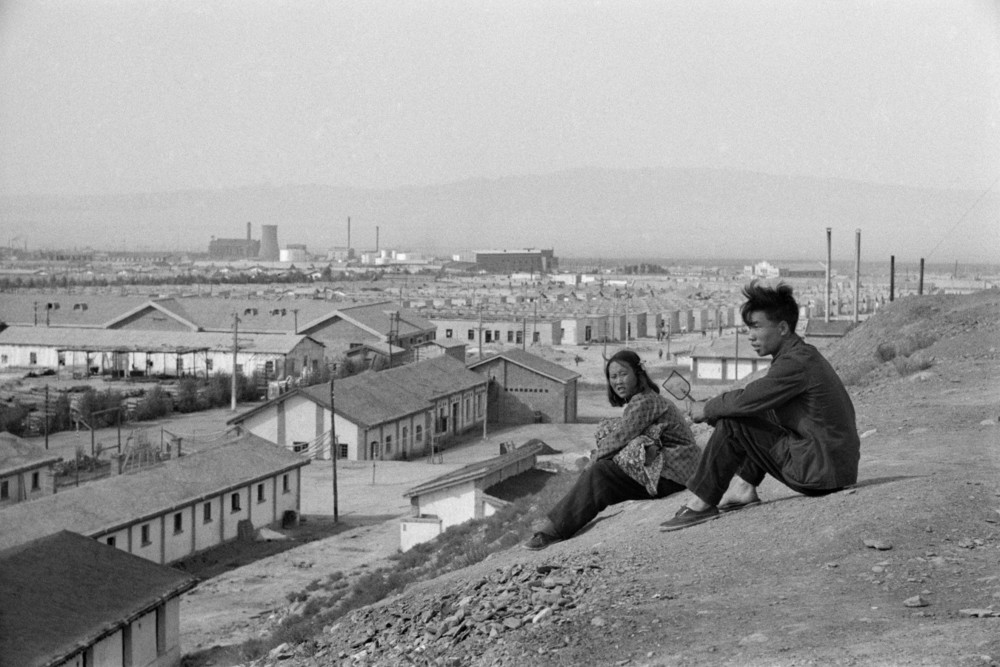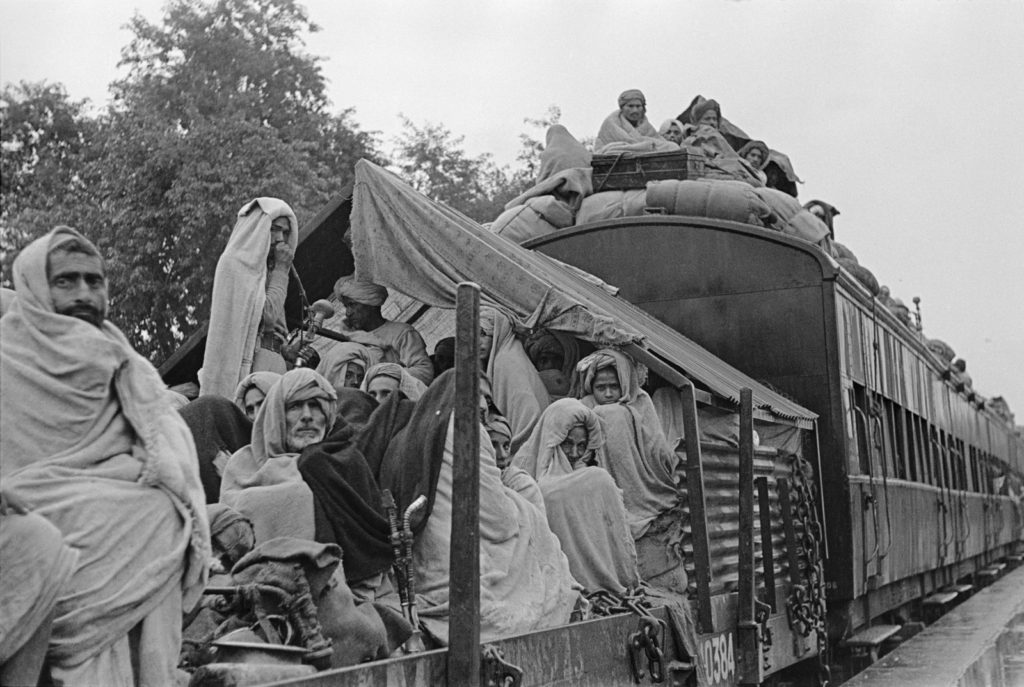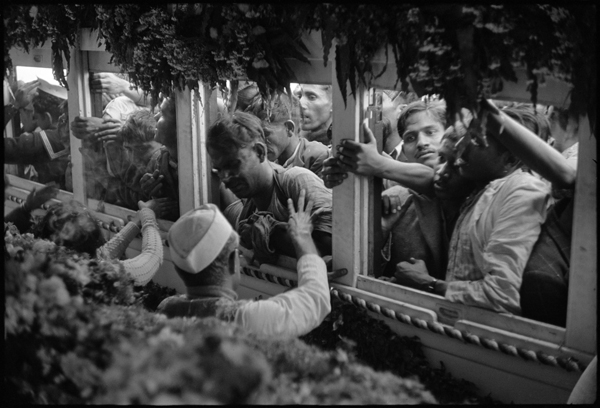Henri Cartier-Bresson
Henri Cartier-Bresson was a humanist photographer, born in France in 1908, who is best known for his candid photography and his role in pioneering the genre that is street photography. His outlook on photography was that it is to capture a decisive moment, and that a camera is ‘an instrument of intuition and spontaneity’.
Analysis
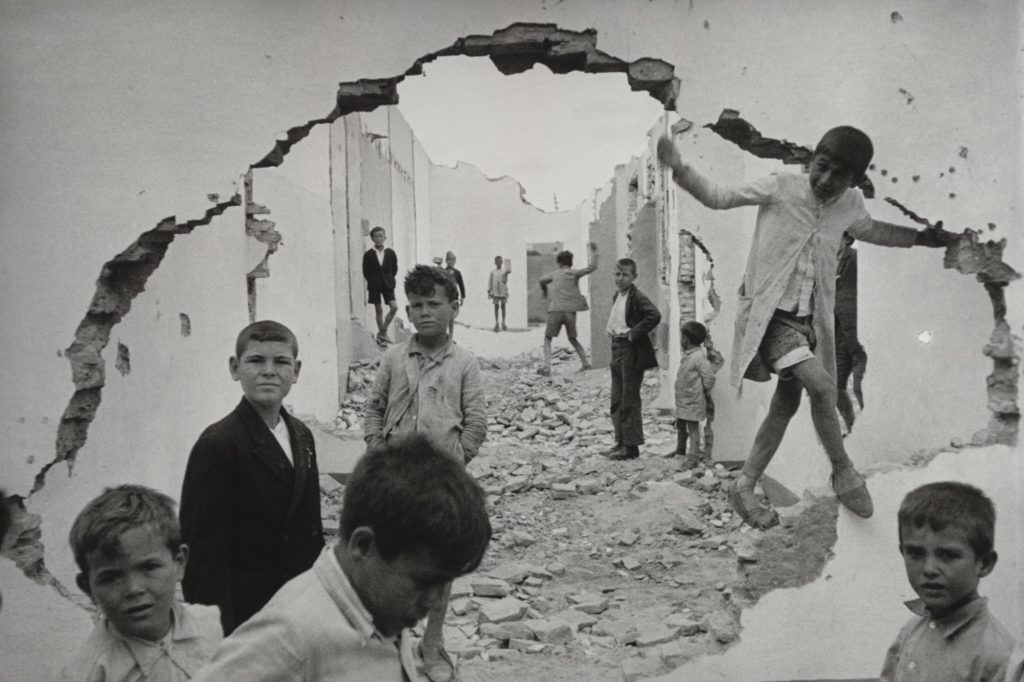
This candid, black and white photograph, taken by Henri Cartier-Bresson, showcases what appears to be a war torn Spain with children playing in and amongst the ruins and rubble, however this image was in fact taken before the Spanish civil war in 1936. The hole in the wall, located in the foreground of the photograph, creates a geometric form, almost in the shape of a circle, which acts as a frame for the background of the image. Furthermore, it can also be said that the dark contrasting line around the hole acts as a leading line, and guides your eye up and around the image, leading you into the tunnel like street in the background. In addition, the tone of this photograph is quite light due to the white walls of the wreckage.
Here you can see that the lighting of this photograph is natural as the image has been taken outside by Bresson, therefore creating an almost overexposed background and natural shadows. It appears for this piece Bresson has chosen to take this photograph with a small aperture, allowing for a large depth of field, as the focus appears to be the same for the children in the foreground and the children in the background. In addition, this photographs seems as it was taken with a fast shutter speed, due to the fact that it was a candid portrait and they appear to be in motion, but aren’t blurry.
It can be said that with this photograph Bresson has intended to capture the differences in cultures and livelihoods, as the photograph is showcasing children playing amongst wreckage, meaning he could be aiming to cause people to recognise their privilege through guilt.
Comparison
Martin Parr
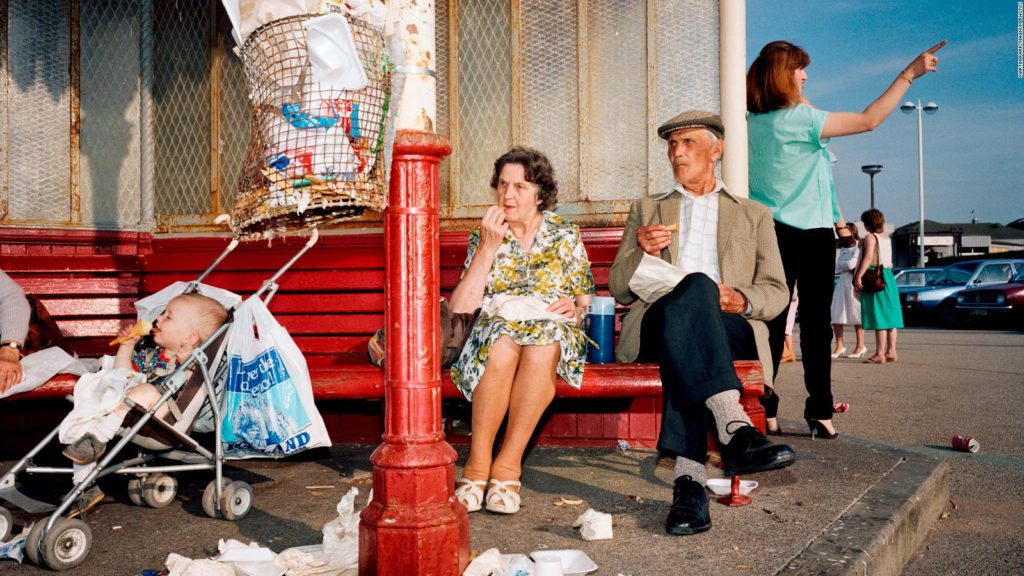
This candid photograph, taken by Martin Parr, differs substantially from Bresson’s image from a visual perspective, due to the fact that firstly this piece by Parr is in colour, whereas Bresson’s work is in black and white. In addition, the settings of each piece are highly contrasting in the sense that Parr showcases a somewhat excessively British sea side scene, whilst Bresson chooses to showcase what looks like a Spanish war ground. Also, Bresson’s photograph is far more geometrically structured than Parr’s, as this image appears to be more free flowing, whereas Bresson’s displays clear shapes and lines, such as the circle like hole in the foreground of his photograph.
However, from a technical point of view it can be said that these two images are quite similar, due to the fact that they have both been taken outside with natural light, causing natural shadows. Furthermore, both photographs appear to have the same amount of focus placed on the entire image, meaning that both have been taken with a small aperture, allowing for a large depth of field. Another way in which these two images share the same technical approach is that they were both taken with a fast shutter speed, you can see this in both images as the subjects being photographs seem to be in motion but are not blurry.
Conceptually however, I believe that these images differ in the sense that Parr’s image could be a portrayal of the joys of British culture and seaside getaways, causing the viewer to have a feeling of nostalgia, or even that as a country we might be overindulgent. On the other hand, I think that Bresson is aiming to show a country which is struggling and in times of need, causing the viewer to feel guilt.

